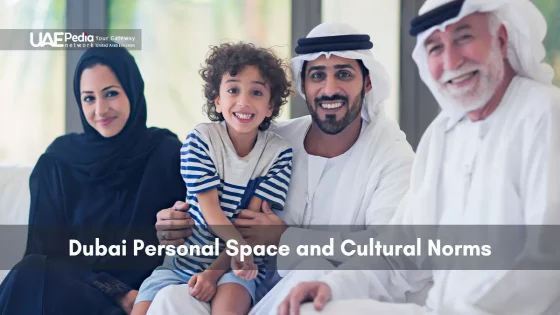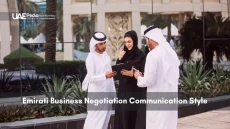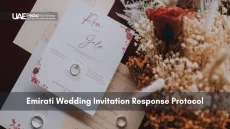Over 16 million visitors explored Dubai last year, yet many missed its cultural heartbeat by overlooking simple gestures. How do you embrace both gleaming skyscrapers and time-honored traditions without missteps? This guide reveals the delicate dance between global flair and local values—starting with what isn’t said aloud.
We’ve all seen travelers unintentionally cross lines—whether through wardrobe choices or enthusiastic selfies. Here, a light scarf matters as much as sunscreen, and a handshake holds hidden nuance. Our tips come straight from residents and frequent explorers who’ve navigated these waters before you.
You’ll learn why adjusting your approach leads to warmer interactions. Think of it as swapping flip-flops for occasion-appropriate footwear: small changes that unlock deeper connections. From market bargaining to metro rides, every moment becomes smoother when you grasp the rhythm.
Dubai fuses Bedouin-rooted customs with hyper-modern infrastructure. Key behavioral vectors are (1) spatial: maintain ≥0.8 m personal distance, use right-hand only for exchange, and avoid sustained eye contact; (2) sartorial: shoulders and knees covered at all times, headscarf for women in mosques and heritage sites; (3) temporal: Ramadan daylight fasting rules prohibit visible consumption, adjust schedules to post-sunset business hours. Non-compliance risks administrative fines (Federal Law No. 3/1987) and social friction.
Economic and social systems still reflect pre-oil trade logic: hospitality codes (majlis seating, gahwa offering) encode trust for commercial negotiation, while souk bargaining mirrors historic pearl-trading protocols. Government heritage zoning (Al Fahidi, Shindagha) and cultural programming (Sheikh Mohammed Heritage Awards) ensure Bedouin kinship norms remain governance inputs alongside AI-driven service delivery.
- Respectful travel starts with observing subtle cues in dress and greetings
- Local etiquette shapes daily interactions, from taxis to souks
- Practical adjustments create meaningful exchanges with residents
Discovering Dubai’s Cultural Diversity
Imagine a skyline where glass towers pierce clouds while wooden abras glide below—this city thrives on contrasts. It’s where Bedouin hospitality meets AI-powered metros, and ancient pearl-diving songs echo beside rooftop DJ sets. Let’s unpack what makes this fusion tick.
Blend of Modernity and Tradition
Walk through spice-scented souks shaded by 1,000-year-old wind towers, then step into a mall with indoor ski slopes. Locals cherish their heritage: camel races still draw crowds, but drones now film the action. Annual festivals like the Dubai Shopping Festival blend holographic fashion shows with henna artists—proof that innovation and customs coexist effortlessly.
Cultural Demographics and Heritage
Over 200 nationalities call this place home. While Emiratis form the cultural core, expats bring flavors from Mumbai to Manila. Yet shared etiquette—like avoiding public displays of affection—creates harmony. “Respect is our universal language,” says a longtime resident. From Diwali fireworks over the creek to Ramadan cannon ceremonies, traditions unite everyone.
Art exhibits at Alserkal Avenue mix calligraphy with digital installations, while heritage villages teach falconry. These overlaps aren’t accidents—they’re intentional bridges between eras. When you grasp this balance, even a metro ride becomes a lesson in how people honor the past while racing toward tomorrow.
Read More:
Dubai Personal Space Cultural Norms
Ever notice how locals glide through packed metro stations without brushing sleeves? There’s an art to moving gracefully here—like synchronized swimmers in a sea of suits and kanduras. We’ll decode the silent rules that keep interactions smooth.
Using your left hand for greetings, payments, or eating is culturally offensive because it’s considered unclean. Ref.: “Dubai 2025: Cultural Dos and Don’ts for Visitors” (2024). Adviser Society.”
Why Space Speaks Louder Than Words
Stand closer than arm’s length, and you might see someone step back—politely but firmly. A resident tour guide shares:
“We show care by giving room to breathe. It’s like leaving space between sentences so others can respond.”
Hand gestures matter too. Always use your right hand for exchanges—passing money, shaking hands, or accepting tea. The left? Save it for private moments. This small switch shows you’ve done your homework.
| Common Gesture | Appropriate Alternative | Why It Matters |
|---|---|---|
| Patting someone’s shoulder | Nodding with a smile | Avoids unintended familiarity |
| Direct eye contact (prolonged) | Brief eye contact + downward glance | Shows respect without intensity |
| Pointing with index finger | Open-palm gesture | Considered rude in local context |
Mastering Crowded Spaces
Markets and metros test your spatial awareness. When jostled, resist the urge to push back—sidestep instead. Locals call it the “sand shuffle,” inspired by desert winds reshaping dunes without force.
Need help carrying bags? Say shukran (thank you) with both hands lightly pressed together. It’s quieter than a hug but carries equal warmth. These tweaks turn potential friction into moments of mutual respect.
Remember: social etiquette here isn’t about perfection. It’s showing you’re trying—like learning a dance where missteps get smiles if your heart’s in rhythm.
Dress Code Essentials for Visitors
Think of your wardrobe here as a passport—it opens doors when tailored to local tastes. While the city thrives on innovation, its sartorial standards blend modern flair with traditional values. Let’s decode what to pack for seamless exploration.
Covering shoulders and knees in public spaces—including malls and government buildings—is strongly recommended to align with local expectations. Ref.: “Cultural Etiquette in the UAE: Do’s and Don’ts for Tourists” (2025). North Penn Now.”
Modesty and Appropriate Attire
Lightweight fabrics that cover shoulders and knees work best for daily outings. A local fashion blogger advises:
“Dress like you’re meeting someone’s grandparents—polished but relaxed. Save beachwear for resorts.”
Men should avoid sleeveless tops in malls, while women benefit from loose tunics over leggings. Pro tip: foldable shawls double as sun protection or impromptu cover-ups.
| Setting | Recommended Attire | Avoid |
|---|---|---|
| Shopping Malls | Knee-length dresses, collared shirts | Short shorts, crop tops |
| Religious Sites | Long sleeves, ankle-length skirts | Sheer fabrics, tight clothing |
| Desert Tours | Breathable linen, closed-toe shoes | Flip-flops, low-cut tops |
Navigating Islamic and Religious Sites
Many mosques loan abayas, but carrying your own shows initiative. When entering sacred spaces, women should cover hair with a scarf. Men: skip the shorts—opt for lightweight trousers. Footwear? Slip-ons make quick removal easy before prayer areas.
Women must cover their hair with a scarf and wear long sleeves at mosques; men must avoid shorts—failure can result in denied entry. Ref.: “Rules to Respect in Dubai” (2025). Practical Guide & Advice.” DUBAI REAL ESTATE
Practical Tips for Men and Women
Pack these essentials:
- Women: Maxi dresses with sleeves, wide-leg pants
- Men: Polo shirts, chinos, breathable blazers
- Both: Foldable hat, neutral-toned scarf
Remember—modesty isn’t about hiding. It’s about honoring traditions while staying true to your style. Nail this balance, and you’ll glide from spice markets to skyscraper bars without a second glance.
Greeting Etiquette and Social Interactions
Greetings here aren’t just hellos—they’re silent handshakes of respect. A local café owner once told me:
“Your first words set the tone. Use ours, and doors open wider.”
Start with As-salamu alaykum (“Peace be upon you”), the region’s timeless welcome. Respond with Wa alaykum as-salam, matching their warmth. This exchange signals you value local customs, even if your accent wobbles.
Using Traditional Arabic Greetings
Keep gestures relaxed. Men often place their right hand over their heart after shaking hands—a subtle nod of goodwill. Women might offer a smile instead of physical contact. Pro tip: mirror the other person’s energy. Formal meeting? Add a slight bow. Casual chat? A palm pressed to the chest works wonders.
Gender Sensitivity in Handshakes
Wait for women to initiate handshakes. Many prefer a verbal greeting, especially in conservative settings. If unsure, greet men with a firm (but brief) grip and women with a nod. One expat shared:
“I thought my outstretched hand was polite—turns out, patience spoke louder.”
In mixed groups, let locals guide the interaction. Adaptability matters more than perfection here.
Remember: greetings forge connections. Nail these moments, and you’ll find strangers becoming guides, shopkeepers sharing stories, and every shukran feeling genuinely returned.
Respect During Ramadan and Religious Observance
When the sunset call to prayer echoes across the city, streets transform into communal feasts under fairy lights. This holy month centers on spiritual growth—fasting from dawn to dusk, then sharing iftar meals with neighbors. Visitors become part of this rhythm by tuning their actions to match the reflective atmosphere.
Observing Fasting Protocols
Locals welcome travelers who honor daytime fasting rules. A resident chef advises:
“Plan meals before sunrise or after sunset. Many hotels offer private dining areas—use them like a backstage pass to stay fueled respectfully.”
Public consumption of food, drinks, or cigarettes isn’t just frowned upon—it’s legally restricted. Carry reusable water bottles discreetly, and schedule coffee breaks indoors.
Adjusting Daily Habits
Business hours shift during this period. Mornings start earlier, while evenings buzz with cultural events. Keep these tips handy:
- Playlists? Swap loud music for podcasts when commuting
- Schedule outdoor activities for cooler post-sunset hours
- Pack snacks in opaque containers for emergencies
Appropriate Public Behavior During Ramadan
Modesty extends beyond clothing. Lower your voice near mosques during prayer times—5 daily moments when the city pauses. Even taxi drivers might pull over to pray. A tour guide shares:
“We notice who respects this quiet time. It’s like turning down your phone brightness in a movie theater—a small act with big impact.”
| Do | Don’t | Why |
|---|---|---|
| Offer Ramadan greetings | Eat in public view | Supports communal spirit |
| Dress conservatively | Play loud music | Aligns with reflective mood |
| Accept date offerings | Refuse hospitality | Strengthens connections |
This month offers rare glimpses into traditions that shape local life. By adjusting your pace, you’ll find deeper connections—and maybe an invitation to share iftar under the stars.
Dining Etiquette and Culinary Customs
Picture a table where fragrant saffron rice passes hand to hand—meals here weave stories as much as flavors. Dining etiquette isn’t just about what’s on your plate. It’s a dance of respect, where shared dishes become bridges between cultures.
Right Hand Usage and Shared Meals
We’ve learned from local chefs:
“Your right hand isn’t just a utensil—it’s a sign of trust. Left hands stay rested, as tradition dictates.”
Communal platters anchor most meals. Wait for the host to gesture “sahtain” (bon appétit) before reaching in. Pro tip: tear bread with your right fingertips—it’s quieter than cutting and shows familiarity with customs.
| Gesture | Recommended Approach | Cultural Significance |
|---|---|---|
| Accepting dates | Use right palm facing up | Symbolizes openness |
| Passing dishes | Offer clockwise around the group | Reflects communal harmony |
| Declining seconds | Place hand over heart gently | Conveys gratitude politely |
Hotel restaurants often blend international menus with local norms. At buffets, let staff plate your food if unsure about serving sizes. Popular dining places like heritage-themed eateries encourage eating seated on floor cushions—keep soles of feet hidden.
Three quick tips for smooth meals:
- Sample majboos (spiced rice) from the platter’s edge—it’s polite to avoid central portions
- Use bread as a utensil to scoop stews, minimizing cutlery clatter
- Finish your drink? Leave the cup tipped sideways—a silent signal for “no more”
Master these rhythms, and you’ll find servers offering secret menu items or invitations to private tastings. After all, breaking bread together remains humanity’s oldest peace treaty.
Using only your right hand while eating or passing food demonstrates respect; the left hand is traditionally reserved for hygiene. Ref.: “Dubai Etiquette: Dos and Don’ts for Travelers” (2024). HolidayKeepers.”
Exploring Local Attractions and Cultural Sites
Between golden dunes and futuristic towers lie stories etched in stone—centuries-old forts, mosaic-adorned prayer halls, and bustling heritage districts. These landmarks aren’t just photo ops. They’re living classrooms where every archway whispers history. Let’s unlock their secrets thoughtfully.
Visiting Mosques and Historic Landmarks
Iconic sites like the Jumeirah Mosque welcome non-Muslim visitors during designated hours. A local guide shares:
“Arrive 10 minutes early. It shows respect for prayer schedules and lets you absorb the calm before tours begin.”
Dress codes here are non-negotiable. Women: bring a headscarf. Men: avoid shorts. Many locations loan abayas, but carrying your own signals preparedness.
Understanding Site-specific Guidelines
Rules vary across attractions. At Al Fahidi Fort, photography’s encouraged—except in private courtyards. In contrast, some heritage villages prohibit flash to preserve artifacts. Check signage upon entry, or ask staff for quick clarifications.
| Location | Key Rule | Pro Tip |
|---|---|---|
| Grand Mosques | Silence phones during prayers | Visit mid-morning for fewer crowds |
| Ancient Souks | Ask before photographing vendors | Carry cash for quick purchases |
| Desert Forts | Stay on marked pathways | Wear grip shoes for sandy stairs |
Three habits elevate your experience:
- Lower voices near prayer areas—even if you’re just chatting
- Remove shoes when prompted, facing soles downward
- Use open palms instead of pointing at exhibits
Respecting these guidelines isn’t restrictive—it’s your backstage pass to deeper connections. You’ll notice guards sharing hidden details or shopkeepers offering mint tea. Because here, curiosity wrapped in courtesy opens every door.
Embracing Dubai: A Respectful Travel Experience
Every journey leaves footprints—make yours echo with respect and curiosity. By honoring local codes in dress, greetings, and daily interactions, you transform from spectator to participant. Think of this city as a shared home where ancient hospitality meets modern energy—a place where small gestures of affection, like using your left hand mindfully, build bridges between cultures.
Tourists often ask: “How do I blend in?” Start by treating public areas as extensions of private spaces. Offer nods instead of handshakes when unsure. Accept that karak chai invitation—it’s your golden ticket to stories beyond guidebooks. Remember, respecting codes isn’t restrictive—it’s how locals welcome you into their rhythm.
Want to dive deeper? Explore how traditions shape today’s skyline through cultural heritage sites. These living classrooms reveal why a simple hand gesture or covered shoulder speaks volumes.
Pack light, but carry awareness. Your effort to adapt—whether mastering right-hand exchanges or pausing during prayer calls—turns brief visits into meaningful exchanges. Here, every “thank you” whispered in Arabic becomes a handshake for the soul.
So walk softly, smile often, and let curiosity guide you. This city doesn’t just open doors—it builds homes for hearts willing to listen.
Women must cover their hair, shoulders, and knees in mosques. Many provide abayas (long robes) at entrances. Avoid tight clothing, and carry a scarf—it shows respect for Islamic traditions while exploring sacred spaces.
Public displays of affection like kissing or prolonged hand-holding are frowned upon. A quick side hug or handshake is acceptable among friends, but modesty rules apply—save intimacy for private spaces.
The left hand is traditionally considered unclean in Arab culture. Use your right hand for handshakes, passing items, or eating—even lefties adapt here! It’s a small gesture with big cultural weight.
Consuming food, drinks, or smoking in public during daylight hours is prohibited. Hotels serve alcohol discreetly after sunset. Dress extra modestly, and greet locals with “Ramadan Kareem” to honor the holy month’s spirit.
Always ask permission before photographing people—especially Emirati women. Avoid snapping pics of government buildings or military sites. In mosques, skip selfies during prayer times and respect “no photography” signs.
Start with Arabic greetings like “As-salamu alaykum” (peace be upon you). Handshakes are light and brief—wait for women to extend their hand first. Never rush discussions; building trust matters more than rigid timelines here.
Eat only with your right hand, and try everything offered—it’s a sign of appreciation. Leave a little food on your plate to show you’re satisfied. If dining on the floor, avoid pointing your feet toward others.
















